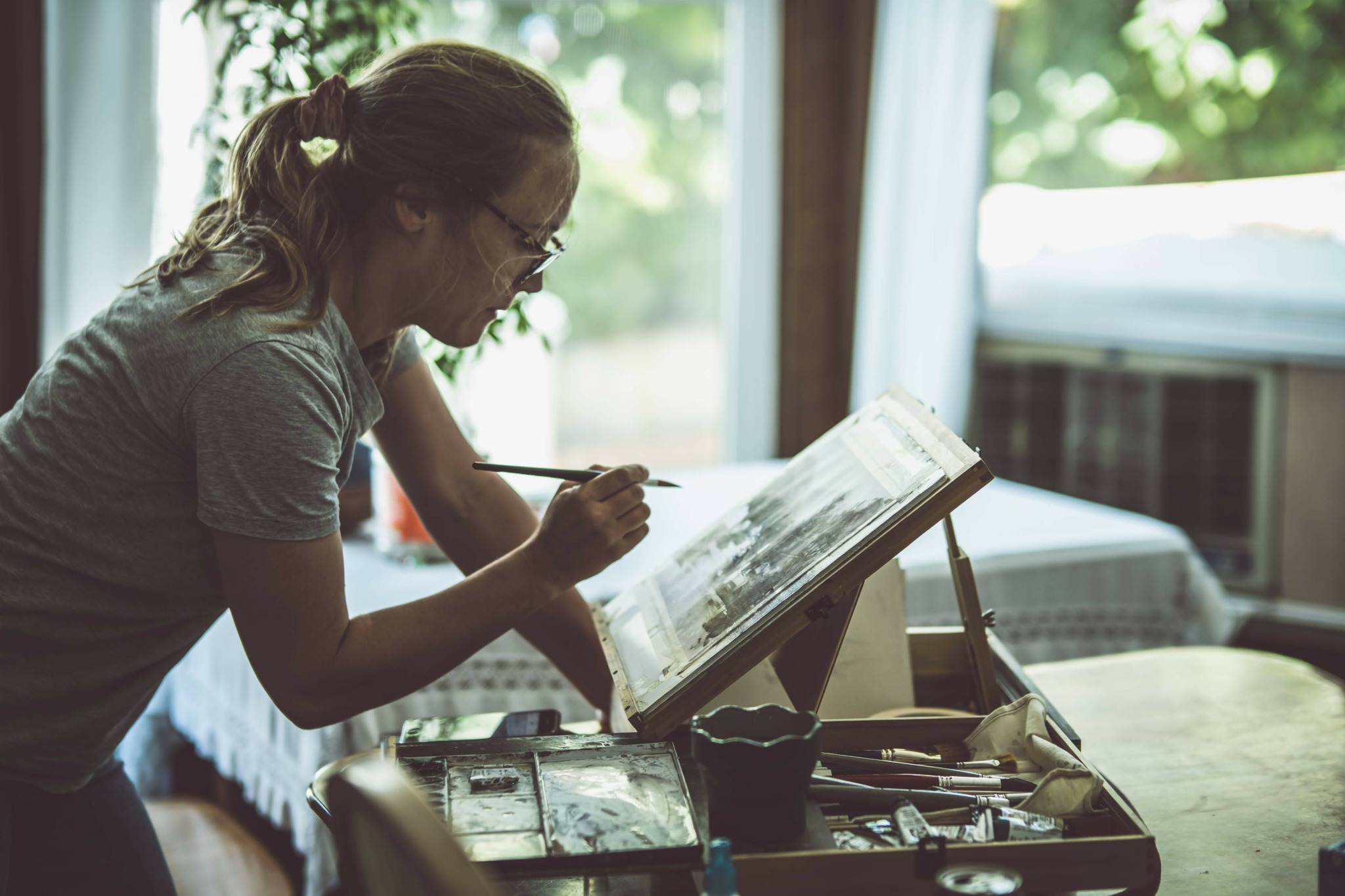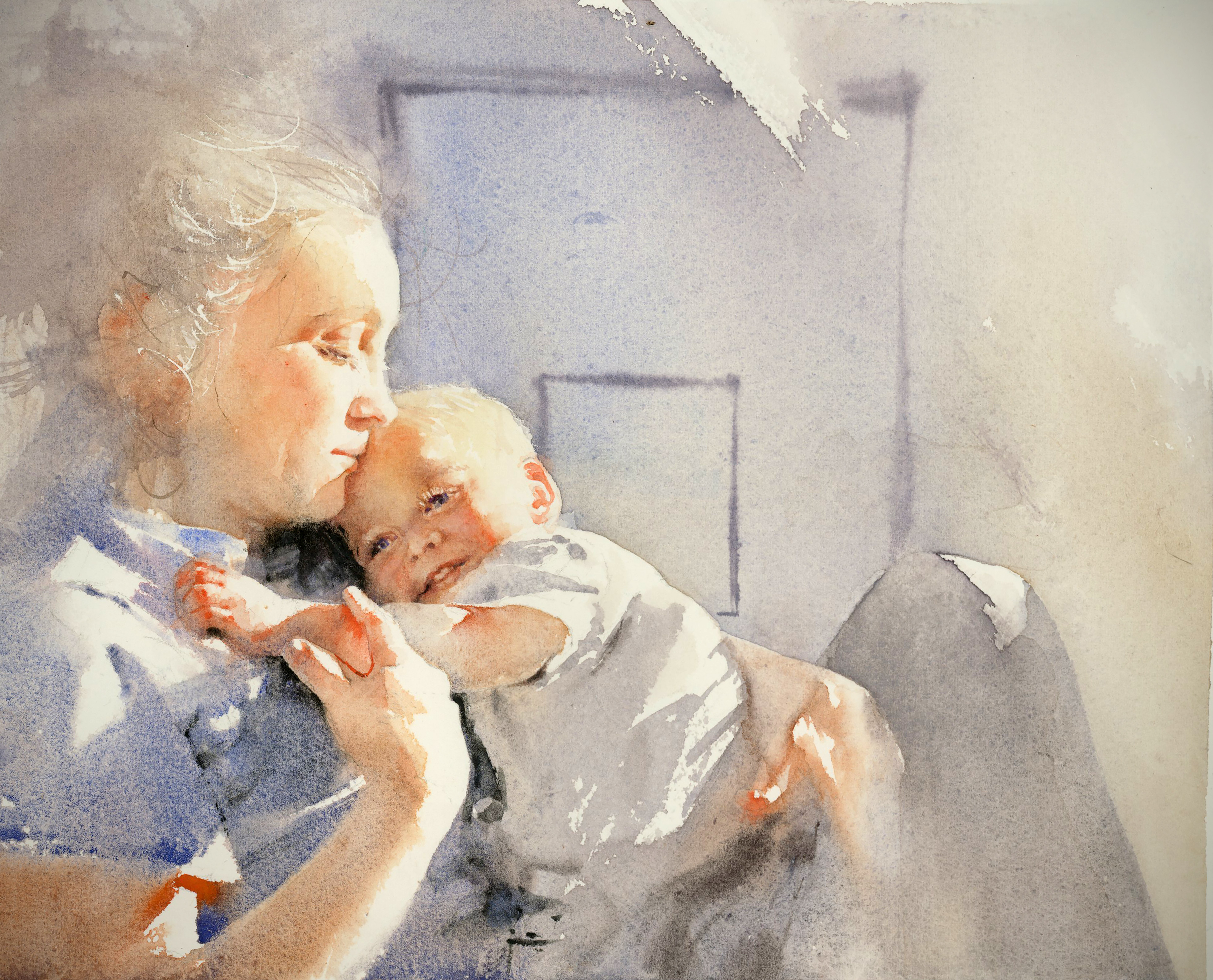We’re excited to introduce you to the always interesting and insightful Michelle Nixon. We hope you’ll enjoy our conversation with Michelle below.
Hi Michelle, thanks for joining us today. What were some of the most unexpected problems you’ve faced in your career and how did you resolve those issues?
My artistic journey is defined by personal response to challenge, as I’m sure many are. Watercolor wasn’t my first medium. It became my medium of choice out of necessity when my husband and I lived in a small apartment with our growing family. Oils were too risky with a baby on the way, so I turned to watercolor. My first instinct was to put away my brushes so I could focus on raising a family, but that proved futile as we realized I was more of a menace to society without painting than with.
What began as a practical decision soon grew into a passion because it mirrored my philosophy of life: embracing imperfection, finding joy in the unexpected, and working with what you have. With the immediacy of home life, when I started watercolor, I did not have time to second-guess myself. My strokes became bold and unapologetic. There were times I was literally holding a baby in my arms. All these elements of life go into whatever you are painting. The painting itself becomes a record of the artist—their impressions, challenges, and the things they most value. Mistakes can’t be painted over in watercolor; it reveals every brushstroke, leaving an honest record of choices, training, and tools.
My biggest challenges with creating art have to do with managing the responsibilities of running a home with five children. There is an inherent tension for someone who creates art between the desire to create and the responsibilities and distractions of life. It is a challenge, but there is also inherent beauty in that tension. This beauty serves as inspiration, sometimes at the price of time and resources.
While I was working through these issues for myself, I created a small piece entitled “in front of a painting.” The two figures are placed in front of a framed piece of art, as if whatever is in the frame was the original intent of the work, but the focus shifts as the moment between the two figures occurs. There is an added layer to think that the piece depicting this moment is itself a piece of art.
Because watercolor is so impressionistic and reactionary, how you feel when you paint will be reflected in your piece. Gratitude then, becomes an essential part of this phase. When you are painting it is good to remember how privileged you are to be in this position. Watercolor, like life, does what it wants for the most part. If things haven’t materialized how you’d envisioned, you’ve still been granted the opportunity to paint for a time.

Awesome – so before we get into the rest of our questions, can you briefly introduce yourself to our readers.
My background is in sociology, which is where my artistic philosophy originates. I have a phenomenological approach to my paintings, which means my work acknowledges my own subjective experience. I am not an objective purveyor of information. Instead, I observe while being largely unobserved, and these moments are distilled into my paintings.
I began painting en plein air at shows and festivals. When I began, there weren’t many watercolorists in these venues, but I was seeking to promote watercolor as a legitimate medium in the realm of fine art. I center my work on human connection, people and their interactions. It is the social space between subjects, including the viewer, that charges my figurative work with meaning. Even when depicting a cityscape or landscape, my intent remains the human connection. My pieces grew to include figurative and conceptual pieces, and I began putting my work in national and international watercolor shows, and one of my most proud moments was receiving the top award at the National Watercolor Society’s International Exhibition.
I am interested in exploring the social in my work, or conversely, the formalistic beauty of humanity. I wrestle with the idea of the social aesthetic; how when objective forms in art are substituted for subjective ones, the composition changes in its complexity based on a shared experience of humanity. What this means is that if two objects are placed close to each other in a composition they give off a very different feeling then if those two objects are people. The negative space between them changes, as it does between the viewer and the subjects being depicted.
My goal is to use subject matter as vehicles for something deeper: a shared human experience, a feeling we all recognize. James Wright’s poem ‘A Blessing’ captures this idea beautifully. It’s not a poem about ponies—it’s a poem about happiness, with ponies as the bridge to that emotion. My pieces work in a similar way. Meaning is created through the treatment of my subject.
Are there any books, videos or other content that you feel have meaningfully impacted your thinking?
At the beginning of my artistic journey I was deeply inspired by the artist Joseph Zbukvic. I couldn’t attend his workshops, but I borrowed his book through the library. The book is “Mastering Atmostphere and Mood in Watercolor.” I do not think the following statement was meant to be an inspiration quote, but it inspires me to this day. He said, “Ideally, every artist should have a studio. However, this is not always possible, and those who don’t have that luxury should take heart from the fact that many wonderful paintings have been produced on the kitchen table!” I was also impressed with his willingness to pass on the techniques and insights he had learned without holding back. The open discourse not only spoke to his confidence as an artist, but also that his motivation furthered art in the world rather than his own self-promotion. I strive to be as open in my own workshops.
Are there any resources you wish you knew about earlier in your creative journey?
Absolutely, in the earlier days of my journey, just keeping a fingernail in the creative part of myself felt like a victory. It felt insular. The biggest untapped resource, in my opinion, is other artists themselves. Sometimes making space to create at all feels like a quiet, solitary battle, and yes, some artists keep their methods and insights close, perhaps out of a desire to protect what they’ve worked hard to learn. But I’ve found most artists are incredibly generous. I think, for the most part, artists are all on the same side; we are all trying, in our own way, to bring more beauty and/or meaning into the world. We believe in the value of art, and when we share what we’ve learned, we strengthen the ecosystem that allows art to thrive.
I’ve gleaned so much from the honest, generous conversations with other working artists—struggles, process, strategies, inspiration, tools. I hope that I am a contributing member of that larger dialogue myself.
Contact Info:
- Website: https://mmnixon.com
- Instagram: @mmnixonart
Image Credits
Photograph:
Joseph Harris
Painting:
‘In Front of a Painting”
Michelle Nixon
9″x11″
2024
watercolor on paper


